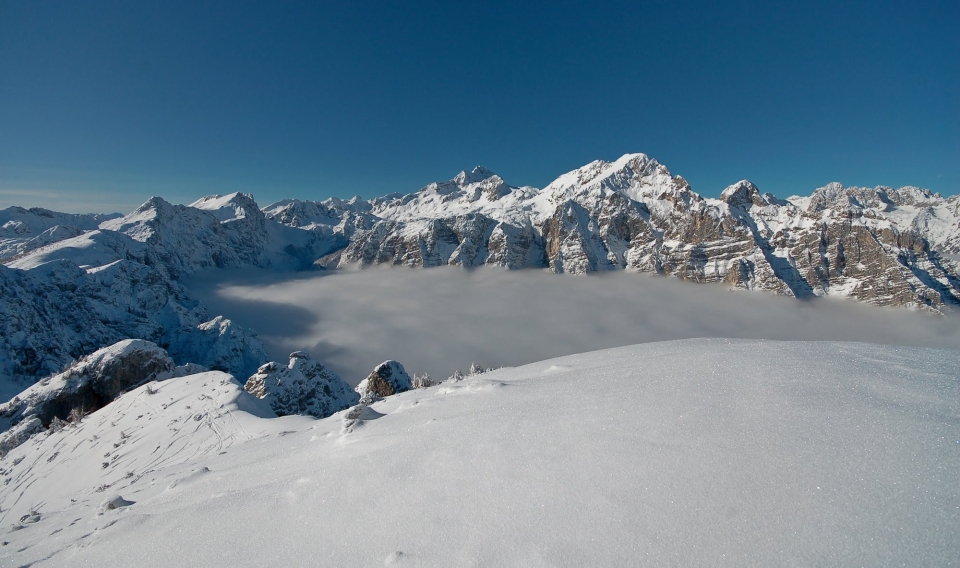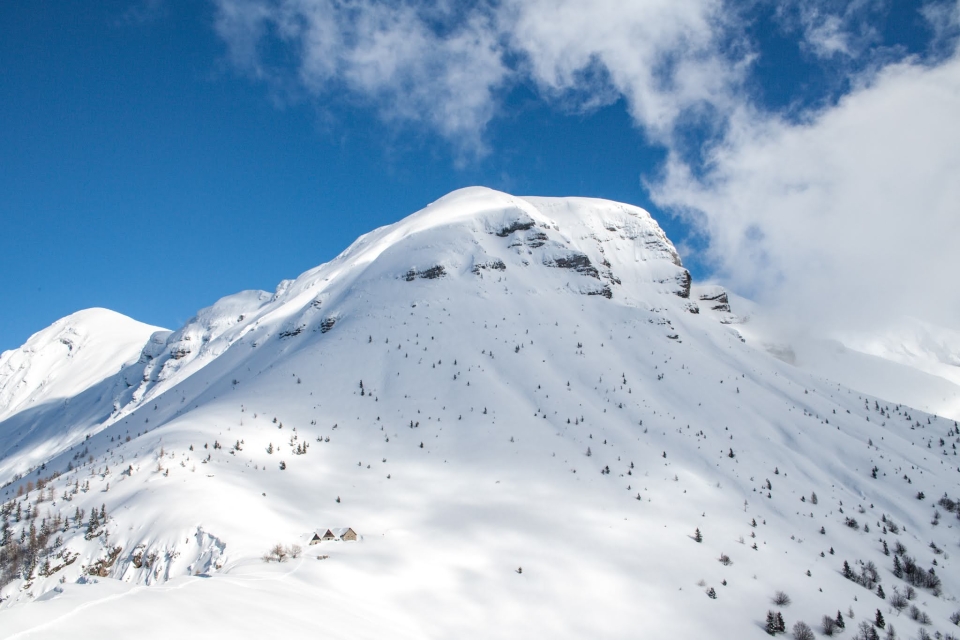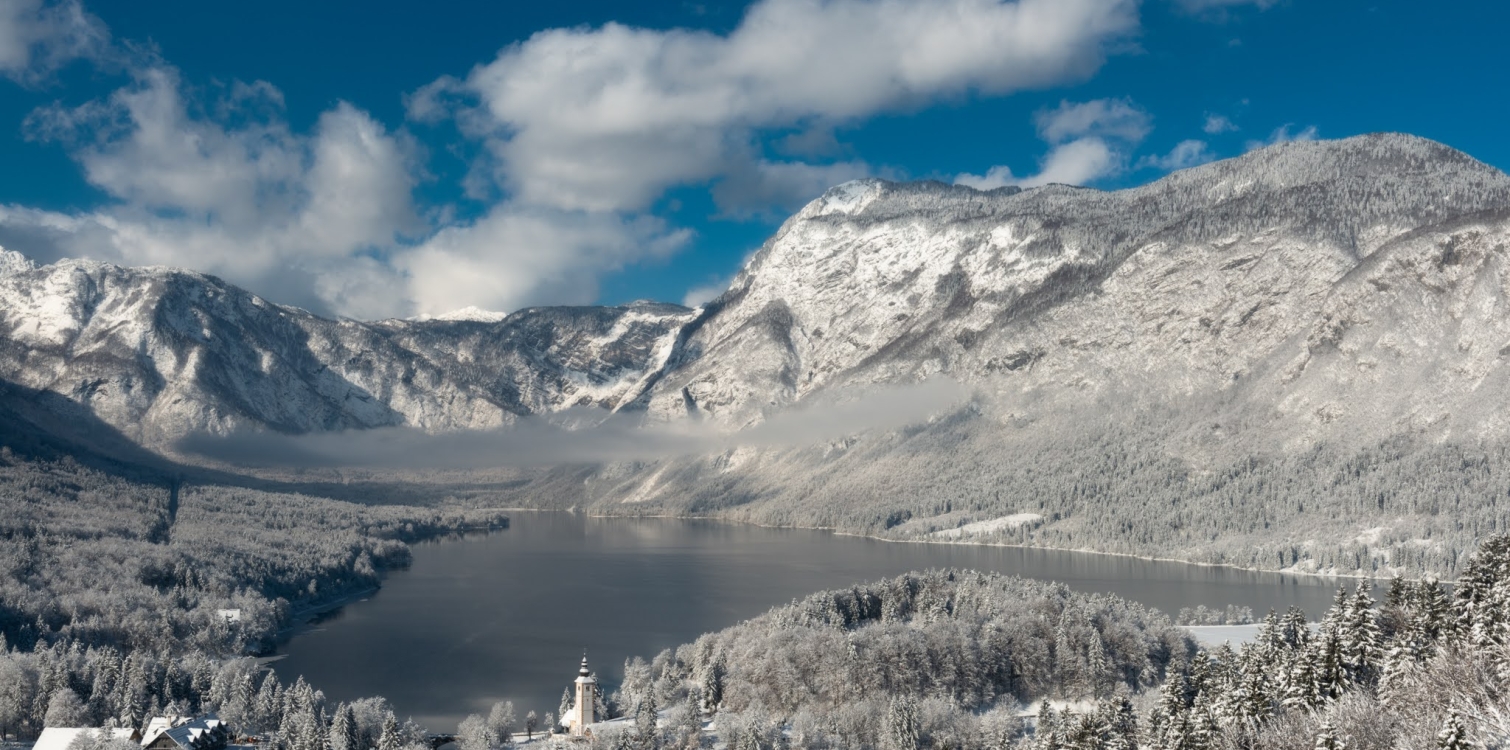Snow, in the case of heavy snowfall, can also cause many natural disasters and damage.
In the past, it has happened in Slovenia that snow fell continuously for several days in a row, bringing traffic to a halt, and even trains stopped running. For some remote areas, snow can also mean being cut off from the rest of the world for several days.
Similar to snow, sleet can cause "ŽLEDOLOM". Due to ice, branches, trunks, telephone and power lines, and poles become covered with a layer of ice. Because ice is heavy, trees break under its weight, iron poles bend, and wires tear.
In the mountains, there is an additional danger of snowstorms. In winter, more snow falls in the mountains, and it is often very windy. The weather can change quickly, leading to the formation of a SNOWSTORM.
In addition to snowstorms, another common snow phenomenon is the SNOW AVALANCHE, which occurs when the layers in the snowpack are only loosely bonded. A part of the snowpack detaches, and the avalanche slides, flows, or rolls down the slope until it loses all its momentum and stops.

Mountain hikers, skiers, and other snow enthusiasts who in winter or spring, not protect their eyes properly may suffer from SNOW BLINDNESS instead of enjoying the winter beauty. Snow reflects about 90% of ultraviolet light, which can cause painful snow blindness.
Winter is usually accompanied by BLACK ICE. This is a frozen form of precipitation on the ground. It freezes on roads and sidewalks, making both driving and walking hazardous. Roads become slippery, and even while walking, we can quickly slip and break an arm or a leg.
As winter gradually recedes and we can already admire the first signs of spring, SPRING FROST is common in Slovenia. It is caused by short-lived and sudden bursts of cold air that damage flower buds and other plant tissues. The most sensitive are the newly fertilized young fruits, which can be destroyed by temperatures as low as -1°C.

DO YOU KNOW?
- In the winter of 2014, much of Slovenia was affected by sleet. Cars and trains stuck, some schools were closed for several days, and thousands of homes were without electricity because several centimeters of ice coated the power lines, causing power outages. The sleet caused damage to over 50% of the forested areas in Slovenia.
- In recent years, backcountry skiing and alpine skiing have become extremely popular. As much as 90% of avalanches that bury skiers are triggered by backcountry skiers themselves. Therefore, always go to the mountains and engage in backcountry skiing only with the appropriate knowledge and equipment!
Thank you.

